Quentin Tarantino’s Feature Film Scripts, Ranked
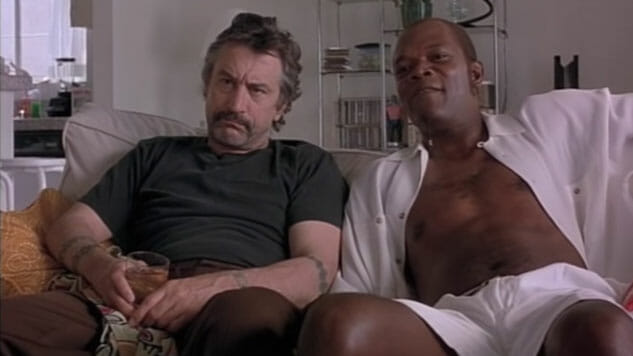
If there’s a prime example of a Gen-X “director as star,” a filmmaker instantly recognizable to and beloved by cinephiles and moviegoing public alike, it’s Quentin Tarantino. He blends French New Wave narrative techniques with Grindhouse cool, imbibing pop culture like a he’s a black hole for any and all definitions of “mainstream art,” then recontextualizing it for a cynical, self-aware generation. Tarantino’s writing mostly consists of witty, self-indulgent dialogue wherein badass criminals and murderers discuss pop culture minutiae at length like a bunch of nerds who spent their 20s working at a video store in the ’80s, occasionally broken by sudden bursts of hyper-creative hyper-violence. He’s the driving force of so much ’90s cinema.
Yet, he didn’t just become defined by that decade, the way many of his imitators did with their pile of Pulp Fiction clones. He’s endured as an American auteur in a Hollywood that no longer cares for filmmaker-driven projects, never altering his voice to match the ever-changing times, always opting to listen to whatever his personal taste dictates. His films still come across as products of specific periods—they just might not be from the period in which they’re produced.
So, in honor of his box-office success with Once Upon a Time in Hollywood, let’s rank all of Quentin Tarantino’s feature screenplays. This isn’t a ranking of the finished films, of course, so direction, performances, cinematography, editing—none have any bearing, unless in referencing how different the script is from the final product.
(Some notes: Tarantino’s two CSI episodes and his short script for his part in the anthology comedy Four Rooms aren’t included for obvious reasons. And though the screenplay for Once Upon a Time in Hollywood isn’t published yet, we’ve included it based on how closely Tarantino’s scripts often mirror his films, reserving the right to update once it is available.)
12. Death Proof

Premise: A generic slasher flick about a psychotic stuntman named Mike who hunts young women. One can imagine a producer pitching this: “Instead of Jason, it’s a stuntman, and instead of a machete, it’s a car!”
First 20 Pages: A Linklater hangout movie—it even takes place in Austin—about friends of a recently broken-up radio DJ taking her to a bar in order to cheer her up. There’s absolutely no hint at the actual genre or tone.
Structure: The barely 90-minute film, the second half of Tarantino and Robert Rodriguez’s fun but uneven double feature Grindhouse project, already felt 45 minutes too long, so imagine reading a 130-page draft of it. A page usually translates to a minute of screen time, so do the math on how tedious and overstuffed this script is. The structure is basically split into two films with their own three act structures. In both, the girls go out for fun and Mike comes after them when there’s barely 10 pages left in the story. The only difference is that Mike wins in the first film, and loses in the second.
Character: Even though we spend countless pages getting to know them, the characters in the first section still come across as interchangeable. The badass stuntwomen definitely stick out more, but they’re so obviously set up to win the fight against Mike that much of the tension dissipates.
Dialogue: It could be fun to listen to a half hour of real stuntwomen tell stories about how they almost died, but in a feature film, especially a thriller that’s supposed to move along faster than a snail’s pace, it’s death on the page.
11. Kill Bill
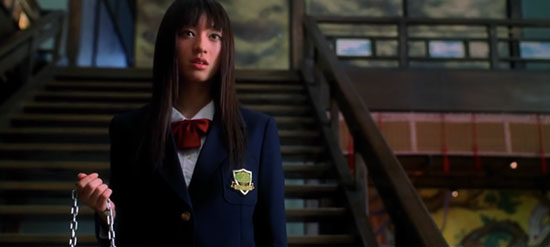
Premise: Revenge fantasy template; legendary hitman/assassin is wronged, goes out for bloody revenge. The details of the character and plot are lifted from the likes of Lady Snowblood and The Bride Wore Black.
First 20 Pages: In a standalone sequence that could work as its own short, we see the Bride execute her first vengeance kill. Setting such a violent fight to the death in a benign suburban household is a clever twist, but Tarantino’s narcissistic tricks, like bleeping out the protagonist’s real name, pulls us out of the intimacy of the sequence.
Structure: Front-heavy with action; style over substance. The second half’s series of exposition dumps comes across as if Tarantino was so enamored with his set-pieces he forgot to add character and story.
Character: Tarantino manages to infuse some humanistic and relatable depth into his archetypal assassin protagonist. She still doesn’t pop from the page (so thankfully Uma Thurman did a lot of the heavy lifting) and giving the Bride a long-lost child taken away from her by the antagonists provides ample motivation, though it isn’t exactly original.
Dialogue: The first half is almost entirely copy-pasted from Tarantino’s favorite kung fu, yakuza, blaxploitation, anime and samurai flicks. The second half settles into mid-tier Tarantino dialogue, with the main antagonist’s captivating monologue about Superman a clear standout.
10. Natural Born Killers
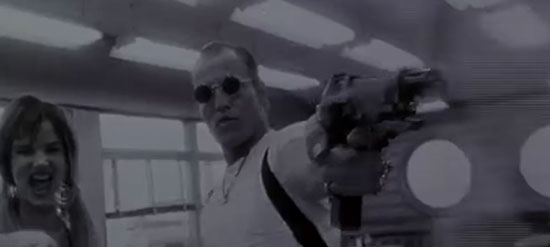
Premise: This is the one Tarantino script that’s vastly different from the finished film. One might think director Oliver Stone took Tarantino’s simple “serial killers in love” story and pumped a bunch of his anti-media satire into it, but Tarantino’s premise—a mockumentary about how the killers eventually became rock stars—is actually driven entirely by its exploration of tabloid journalism, an original concept, especially for 1990, when it was written.
First 20 Pages: The opening scene, in which love-struck killers Mickey and Mallory murder a pack of horny hillbillies, is identical to the finished film. It’s a brutal hook that unrelentingly sets a tone of unapologetic carnage and bug-eyed satire.
Structure: Unfortunately, this is where the script drops the ball. The languid pacing stretches out simple one- or two-page scenes to ten-plus. It’s overindulgent even for Tarantino standards. It’s a drag.
Character: Even though the script dives into the smallest details, a lot of which is superfluous to the point of being irrelevant, we never really get a sense of why the serial killers are so madly in love in the first place.
Dialogue: We’re told ad nauseam by Mickey and Mallory that they love each other.
9. From Dusk till Dawn
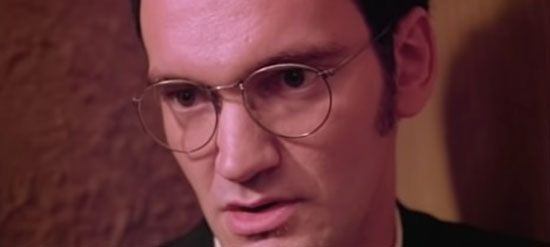
Premise: Actually, that belongs to Robert Kurtzman, who’s credited with the story. The two halves of the premise—first a crime-ridden road trip during which two bank robber brothers kidnap a family to cross into Mexico, and second a campy, gory survival horror with vampires in which the criminals and the family team up to kill literal bloodsucking strippers—aren’t original on their own, but the way they coalesce without bleeding into one another creates a fun genre exercise in bait-and-switch.
First 20 Pages: Like in Death Proof, From Dusk till Dawn’s opening scene doesn’t telegraph the true genre of the story. A more traditional script would have offered up a hook about vampires in order to prep the audience for the overall content. This one has a clear advantage because the bloody shootout in the convenience store might not introduce any plot, but it certainly sets the tone.
Structure: The crime drama and the vampire horror are almost surgically split evenly, though the overall script carries a fairly traditional three-act structure, especially regarding character arcs in which the criminals and the family gradually bond. The vampires offer the motivation for this, linking the two halves.
Character: Even before George Clooney offered his natural charm to Seth Gecko, the abrasive but somehow cool-headed leader of the criminal duo, the character comes to life through the page. Unfortunately, the same can’t be said for the strictly one-dimensional Richard Gecko before Tarantino couldn’t help himself and unceremoniously jumped into the role. On the page, the family lacks definition and depth, even with the ex-preacher patriarch’s by-the-numbers arc of regaining his faith.
Dialogue: Seth Gecko dominates this field with some uniquely hilarious one-liners. Without this character, the first half would be indistinguishable from some made-for-TV mediocrity. As soon as the bloodsuckers attack, we get the expected onslaught of pop-culture references to other vampire movies.
8. Inglourious Basterds
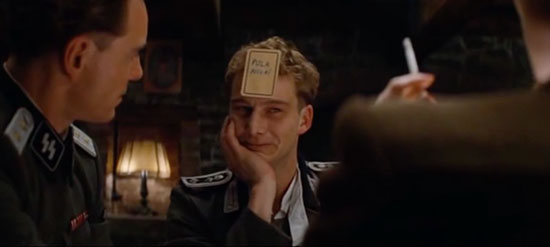
Premise: Which one? The main problem with this script is that it reads like a surprisingly intimate and emotionally heart-wrenching story of a Jewish woman named Shosanna who’s filled with the burning desire for revenge after her entire family is slaughtered in front of her—which is invaded by a giddily violent, episodic cartoon/sitcom hybrid following a super duper secret platoon of US soldiers tasked with “killin’ dem Natzees.”
First 20 Pages: An absolute masterpiece in building tension and setting up the main antagonist. Taken almost as a short film of its own, it should be studied by aspiring screenwriters on how to provide the perfect hook for your story. The rest of the script doesn’t follow through on its uniform focus and clarity.
Structure: If all of the scenes centered on the Natzee-killin’ platoon were taken out, which really wouldn’t change the overall narrative much, Shosanna’s revenge tale actually sports a really well-balanced structure that explores her character and forwards her plot in equal measure. The platoon part is either far too long—the midpoint sequence where they end up bumping into German soldiers in a tavern is torturously interminable—or come across as wildly atonal.
Character: More Shosanna and her tale of sweet revenge, less platoon, and we’d have been fine.
Dialogue: It’s refreshing how restrained Tarantino is when giving dialogue to Shosanna, diving more into her basic but instantly relatable anguish and anger without leaning on go-to trick of a spiffy monologues. This also means that whatever restrained cliché dialogue Tarantino kept at bay for this character explodes onto the scenes with the platoon, resulting in a wildly uneven experience.
7. The Hateful Eight
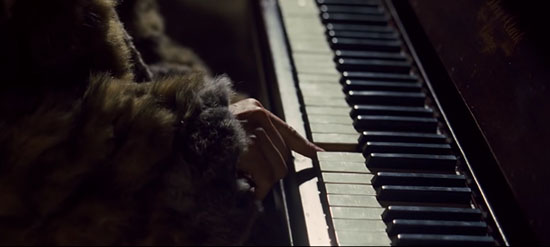
Premise: A chamber thriller wrapped around a grimy western that starts off with Hitchcockian suspense only to devolve into a gross-out murder spree that rivals Evil Dead and The Thing in the most joyful ways possible.
First 20 Pages: Tarantino really takes his time here, even more than usual, when it comes to introducing his main characters. It’s also hard to blame him, since this is more of an ensemble piece than a protagonist-focused story. Still, he could have certainly moved things around to give us an earlier feel for the main players.
Structure: This is the height of Tarantino’s self-indulgence: expecting a single location chamber thriller with an easily predictable mystery to last a whopping two-and-a-half hours before the admittedly creative violence begins. The pacing is helped a lot in the finished film via the stark 65mm cinematography and performances, but on paper it’s a bit of a slog. The flashback at the second act break is overlong and doesn’t give us any information we already didn’t know.
Character: The paranoia amongst the titular eight who are trapped in a haberdashery while they try to figure out who’s on the side of the law and who’s a murderous criminal is potent thanks to Tarantino giving each character enough traits that support both sides of the mystery.
Dialogue: Tarantino is usually less-than-subtle when it comes to exploring race and other sociopolitical relations in the U.S., so kudos here for deftly and cynically examining the naturally violent disposition towards race that this country exhibits, without spelling it out via virtue signaling monologues.
6. Django Unchained

Premise: Yet another revenge fantasy, but this time Tarantino fully embraces his Spaghetti Western influences to present an effortlessly cool and unfiltered representation of the genre.
First 20 Pages: The opening scene in which Schultz, the moral-bound and nonchalant bounty hunter, murders a team of slavers after regaling them with his gentlemanly demeanor, represents one of the most concise and clear ways of introducing a supporting character in recent years. Also notice that the timid Django is far from the slaver-killing hero he is at the end, setting up a strong character arc.
Structure: The clear goal of the titular protagonist, a freed slave searching for his long lost wife, would usually propel the plot and the structure forward. Here, Tarantino spends much of the second act on building the side missions that Django and Schultz embark on together. This way, once the main objective of the protagonist reenters the picture, we have a solid grasp on these characters so we can kick back and enjoy the plot.
Character: Even with a romance at its center, the true core relationship here is the friendship between Django and Schultz. Schultz could have easily come across as a white savior trope, and Django a simple token of black empowerment, but their unique chemistry transcends these cliches in order to create three-dimensional characters.
Dialogue: Schultz and Calvin Candie, the main antagonist who owns Django’s wife, get the lion’s share of Tarantino’s witty monologues, while Django fits his characteristic as he mainly focuses on his central mission.
5. Reservoir Dogs
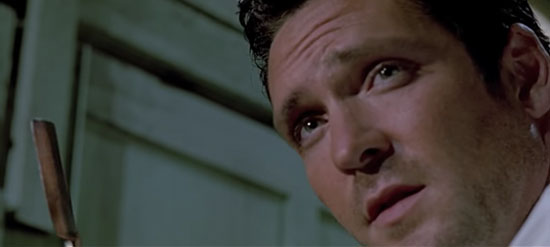
Premise: Basically a theater play in screenplay form, as a small group of jewelry robbers argue over why their mission went sideways afterwards in their safe house. Simple and cheap, perfect for a first feature. It’s also a blatant rip-off of Ringo Lam’s City on Fire.
First 20 Pages: This is the scene that solidified Tarantino as a unique voice: The robbers eat at a diner, shooting the shit about everything but the robbery they’re about to commit, from the salacious context of Madonna’s Like a Virgin to the importance of tipping your wait staff. Yet even though the scene doesn’t explicitly reference the plot, we immediately get a sense of tone and mood. These men are up to no good, and the scene solidifies it without being explicit.
Structure: The formula of setting up a character and then flashing back to their origin gets a bit repetitive, but is effective in building up to the bullet-riddled climax. The script is also a very fluid and easy read, since the action lines are mostly about the immediate visuals. Take a lesson from this aspiring screenwriters: Even the self-indulgent Tarantino knew that he had to be brief and to the point with his writing when he was coming up in the game.
Character: Even though the ensemble is split into various cadres of robbers, only three or four are essential to the story. The rest, however, at least fulfill their single uses in the plot.
Dialogue: There’s just enough material here for a 30-to-40-minute short, so Tarantino’s hypnotizing ramblings on pop culture and wild gangster tales do most of the heavy lifting.
4. Once Upon a Time in Hollywood
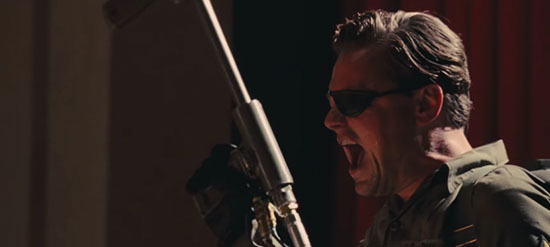
Premise: A refreshing change of pace for Tarantino: a character-driven bromance about a washed-up star and his gofer/BFF/stuntman, wrapped around a nostalgia-draped love letter about a wistful time in the titular location. I won’t even mention how the Sharon Tate murders are linked to the plot; you deserve to experience that yourself.
First 20 Pages: This is primarily a film about the location and the period, so opening scenes that focus on that over the characters makes sense. That being said, we do get the basic dynamic of the protagonists, but we also have to wait a bit more before they begin to flesh out.
Structure: The way the script builds up like a plot-light hangout movie only to eventually reveal that every single scene, including the ones that feel superfluous, are vital to pulling off the viscerally satisfying climax is quite an impressive magic trick.
Character: Imagining the protagonists without Brad Pitt and Leonardo DiCaprio’s presence and chemistry is tough. But on paper, it feels like Pitt’s stuntman would rely more on the actor’s presence to showcase some depth, while DiCaprio’s troubled actor gets a clearer and more relatable character arc as a deeply neurotic prima donna who struggles with his fading stardom.
Dialogue: Pitt’s dialogue is quick and to the point, while DiCaprio is an appropriately meandering mess of self-doubt and depression. Tarantino’s characters usually operate as mouthpieces for him, so such a stark establishment of personal dynamics between these characters is a nice change of pace.
3. True Romance
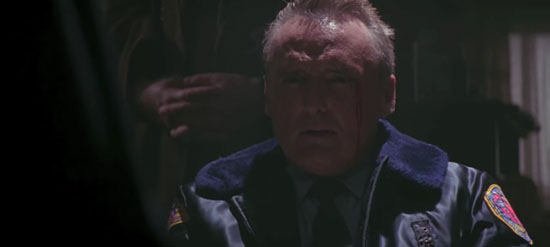
Premise: Tarantino makes up for his underwritten romance in Natural Born Killers with this follow-up script where he constructs a relatable romance first, and a deliciously convoluted and uber-violent crime plot second.
First 20 Pages: It’s damn near impossible to credibly have your central couple in a romance introduce themselves to each other only to decide to get married by page 20 without a considerable time transition in between. Tarantino lays out the chemistry between the Elvis- and kung-fu-obsessed Clarence—a Tarantino placeholder if there ever was one—and the hooker-with-a-heart-of-gold Alabama so succinctly that we understand how they would wholeheartedly decide to spend the rest of their lives together after a couple of hours of knowing one another.
Structure: Even though Clarence’s get-rich-quick scheme, after running from gangsters upon killing Alabama’s pimp, is fairly labyrinthine in plot, Tarantino manages to keep every piece in place while delivering exposition with a balanced touch. Tarantino never falters from the emotional core of the story.
Character: Understanding Clarence and Alabama’s undying love is central in selling what’s otherwise a standard heist movie, and those characters thankfully pop off the page.
Dialogue: The first works of a writer are usually about the writer, and that’s the case here. Even though Tarantino probably and hopefully never got involved in a deadly cocaine trade-off, Clarence’s dialogue, full of sheer unstoppable excitement when discussing his favorite pop culture, can be lifted as is for one of Tarantino’s rants during a talk show appearance. It’s the way that Clarence relates to Alabama that establishes him as a character who stands on his own.
2. Pulp Fiction
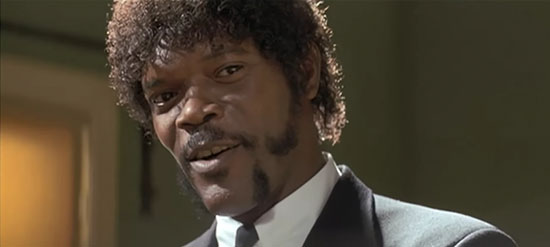
Premise: If its structure were rearranged to be a chronologically straight crime anthology, Pulp Fiction wouldn’t retain its reputation as one of the handful of game changers in film history. That being said, each of its three stories manages to upend the confines of their pulp influences to subvert our expectations in countless clever ways.
First 20 Pages: This is Tarantino in a nutshell: One scene meticulously lays out the intricate plot machinations and practical details through laser-focused dialogue, and the following scene finds two characters talking about anything but the mission at hand.
Structure: From a strictly screenwriting sense, the moving around of the timelines isn’t particularly impressive, and feels downright dated today. However, it’s in the way each of the three stories take hard turns into surprising developments, favoring character over artifice, that Pulp Fiction shines as one of the best screenplays of its decade.
Character: Pulp Fiction’s one fault is that, even though its archetypes are given surprising depth, its archetypes still remain archetypes. We’re directly engaged with their predicaments, but their genre personas create an invisible wall that keeps us from fully relating to them.
Dialogue: Endlessly imitated to this day, but never matched. From “Royale Le Cheese” to “Ezekiel 25:17,” this is the crackling dialogue that solidified Tarantino as a legend in the making.
1. Jackie Brown
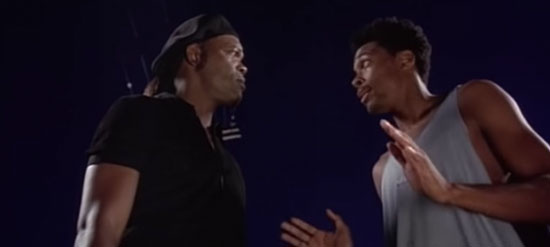
Premise: Even though it’s an early Tarantino movie, Jackie Brown is such an insightful and empathetic character piece that it comes across as the kind of measured and patient material a master filmmaker would put out in their later years. Perhaps that’s due to this being the only adaptation on this list. It’s based on Rum Punch by Elmore Leonard, and Tarantino’s very faithful adaptation reads like a filmmaker who was content with leaving aside his ego—one can guess how hard that was for Tarantino—and serve whatever attracted him to the source material. Thus, even though Jackie Brown contains a fairly complicated heist plot amidst Tarantino’s usual toying with non-linear structure, it’s essentially a film about the regrets and fatigue one finds oneself in one’s advanced years.
First 20 Pages: Tarantino immediately sets this apart from his other work by introducing the titular protagonist as more or less a regular middle-aged woman who just wants to live in peace and comfort, but is drawn into a life of crime that’s over her head. We don’t see the typical Tarantino braggadocio in this character. And when such a character pops up in the form of Ordell, the main gangster antagonist, he seems to be going through the motions to always prop himself up as the big dog, lest his competition smell his weakness, a dichotomy presented with remarkable subtlety.
Structure: What makes Jackie Brown so special is that both the characters and the plot work in perfect unison. Every character, right down to ones with a handful of lines, are clearly defined, while every element of the heist plot is integral to the overall structure. As opposed to that of Pulp Fiction, Tarantino’s non-linear narrative is essential to the story, which wouldn’t work if told chronologically.
Character: In order to escape Ordell’s murderous clutches after she bungles a money drop, Jackie has no choice but to rob him big in order to execute his getaway. To pull this off, she needs the help of her bail bondsman, the almost frustratingly levelheaded Max. It’s the unspoken sexual chemistry between these two characters, as well as the lifetime of bad choices that keep them from acting on their emotions, that form the emotional cortex of the script.
Dialogue: Leonard’s influence on Tarantino keeps most of his self-serving instincts at bay, delivering dialogue that feels more natural than grandstanding. Even the trademark Tarantino-esque monologues carry an underlying feeling of uncertainty and self-doubt, infusing his characters with more depth than ever found in a Tarantino joint.